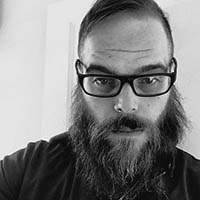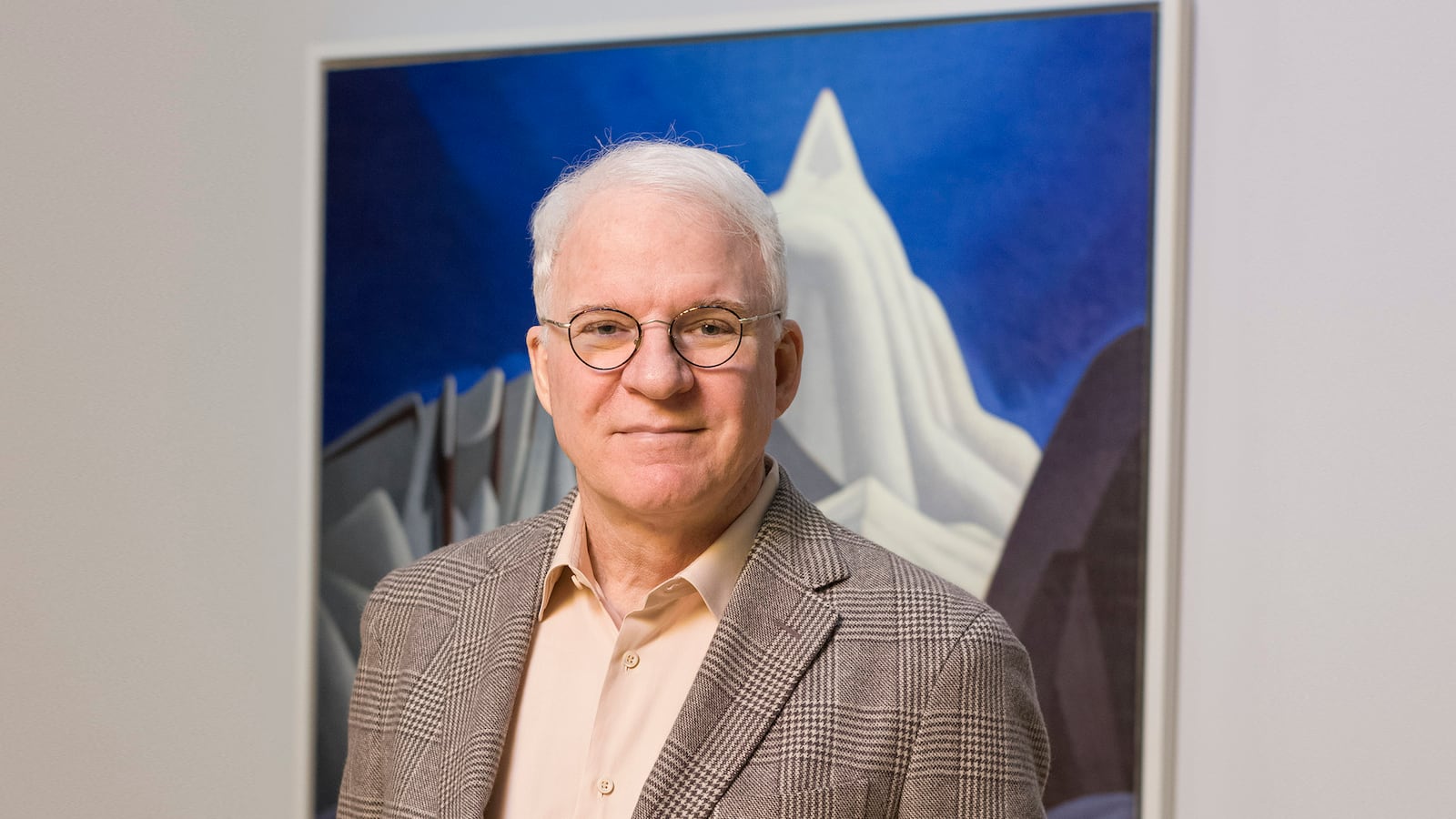The first time the comedian Steve Martin came across the work of renowned Canadian landscape painter Lawren Harris, he thought he’d stumbled upon an unknown.
Martin explained as much in Boston on Friday afternoon for a preview of The Idea of North: The Paintings of Lawren Harris, an exhibition that he himself curated.
Martin elaborated on his longstanding love affair, and the cultural resonance of Harris’ work, alongside Cynthia Burlingham of the Hammer Museum in Los Angeles, Andrew Hunter of the Art Gallery of Ontario, and the MFA’s Taylor Poulin.
Martin will appear again on Saturday at the museum with artist Eric Fischl, and The New Yorker’s Adam Gopnik.
“I’ve had a long fascination and interest in American Modernism and American landscape painting in the 19th century and early 20th century,” Martin said. “When I saw Lawren Harris (who lived from 1885 to 1970) I actually mistook him for a Rockwell Kent, an American painter of the same era and same subject matter. But I thought this was the best Rockwell Kent I've ever seen.”
“Actually, I thought, 20 years ago, ‘Oh I’ve discovered somebody!’—not knowing that he was already Canada’s most important artist.”

After having spent some time evangelizing about the grandeur of his modernist landscapes—largely of the icy shores of Lake Superior, the Arctic, and the Rocky Mountains—the Hammer asked Martin if he might be interested in curating a show.
His first instinct was “of course not,” Martin said. But Harris’ relative anonymity here in the States convinced him it would be worth it.
“He is about the only artist who I could conceive of curating, because his masterpieces, all in Canada, are known,” he said, gesturing to ‘North Shore, Lake Superior,’ a 1926 piece that shows a solitary broken tree straining toward the streaming sunlight, that is among the best known paintings there.
“In Los Angeles no one I was showing him too had ever heard of Harris,” Burlingham said.
“No one has ever seen these landscapes,” she said of the stark terrain. “No one has ever been to these places.” Although, she said, along the way she did ferret out a few colleagues who were themselves secretly Canadian.
It’s that sense of place, and how it plays into Canadian national identity, that gives the exhibition its name.
Martin, a national treasure in his own right—although, you may or may not be surprised to hear, not himself actually Canadian—is well known as something of a Renaissance man for his work as a comedian, actor, playwright, novelist, essayist, and banjo-player.
But over the course of the discussion, and a tour of the works on display--some 30 pieces from a fertile period in Harris’ career spanning from 1921-1934—he proved he was no dilettante when it comes to explaining art history either. His 2010 novel, An Object of Beauty, was set in the art world after all.
In tandem with Harris’ paintings, two galleries of thematically consistent works, one of which Martin also curated, placed the artist in the broader context of early 20th century Modernism.

Among the other works were those, like Edward Weston’s ‘Lake Van Norden’ that present a direct subject matter analogue, and others like the works of Arthur Garfield Dove that draw from a more abstracted relationship. Similarly, a likeness with Georgia O’Keeffe’s ‘End of Barns’ revealed itself when hung side by side.
In much the way she drilled down the image of a barn to its core idea, then represented that idea in more simplistic terms, Harris traveled the same metaphoric distance when it came to depicting the idea of a mountain.
“I think it’s very conducive to seeing that he fits in a wider context than Canadian landscape painting,” Martin said of the adjacent galleries.
“To describe these pictures you just have to think of what a mountain looks like in the north, possibly with snow, possibly without snow, but reduced to its essentials,” he added. “And in the reduction of its essentials, meaning to simplify, often he’d moved mountains.
“He took them out in the background, he might rearrange them, he might stick a mountain over here to help the picture be balanced--something transcendent occurred. Something that goes beyond just the portrait of a landscape. He’s brought into it the self, the soul, an exhalation of mankind.”
Martin told of his experiences on a film in the Yukon, taking helicopters to work every day, flying between the rocky peaks. “All the time I kept thinking, this looks like Lawren Harris.”
“When a painter abstracts a landscape, and you’re in the territory, you go, ‘Oh, I see, it’s exactly like this.’ Even though it’s not a complete representation of it. But it’s exactly what it’s like.






